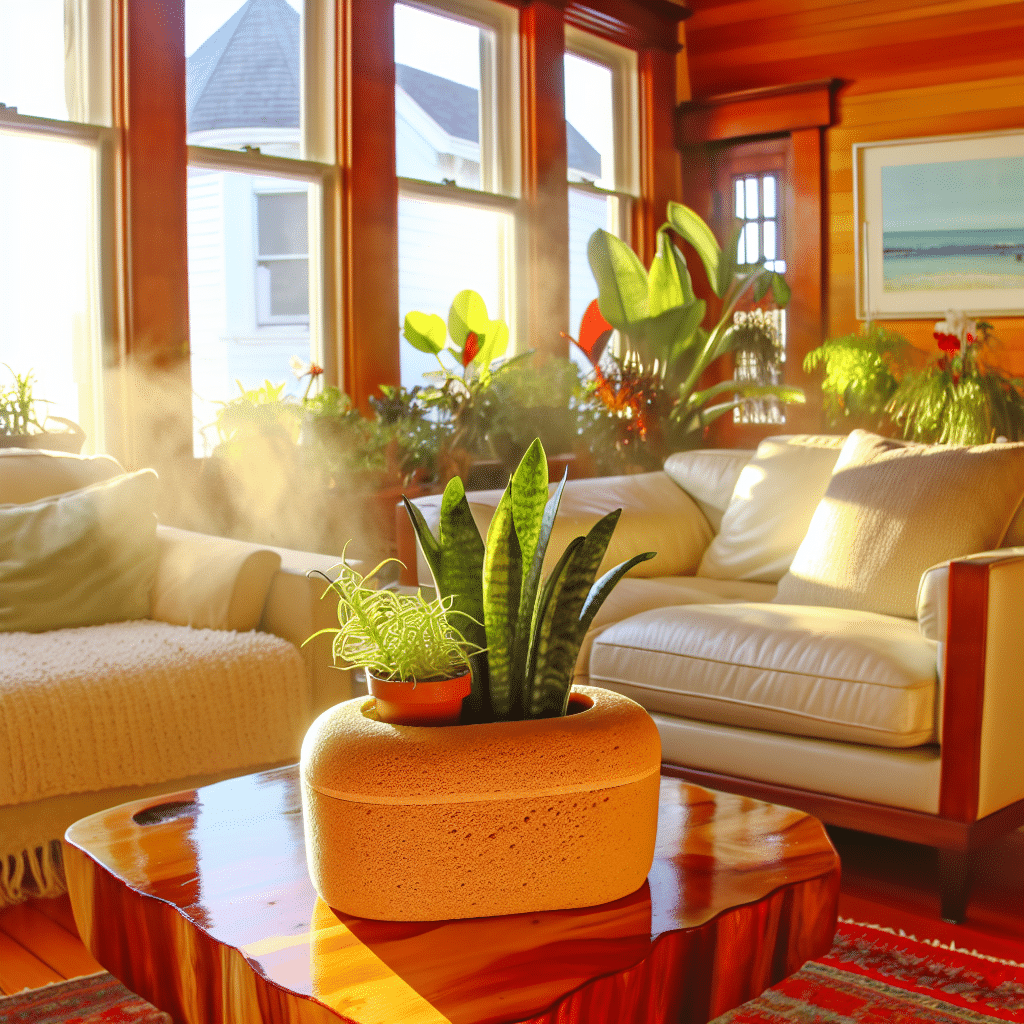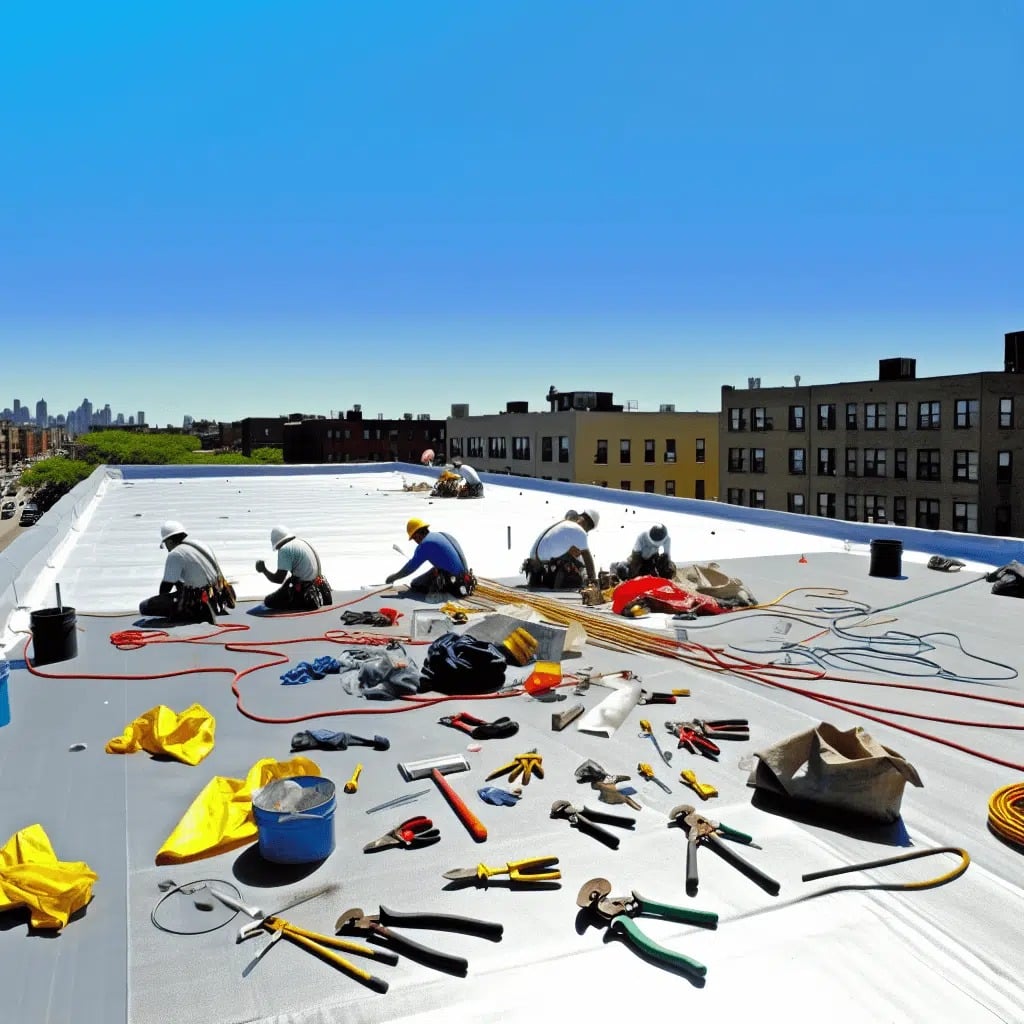The Unseen Impact of Seasonal Air Dryness
As the summer sun heats up Newport, so too does the urgency for maintaining a comfortable and healthy indoor environment. That subtle sense of discomfort you feel could be more than just the heat—it could be the dry air impacting your health. Symptoms like itchy eyes, scratchy throats, or even worsened allergy and asthma symptoms can stem from low humidity levels. That’s why considering a homemade humidifier isn’t just a whimsy—it’s a necessity. It’s an accessible way to address these issues head-on and restore balance in your home’s atmosphere.
A Straightforward Solution to a Complex Problem
Building a homemade humidifier may sound intimidating, but it’s a process shrouded more in mystery than complexity. With common household items, you can create an effective system to dispel the dryness that plagues your home during the warmest months. It’s a testament to simplicity, showing that even the most straightforward solutions can yield significant improvements in daily living. Beyond the immediate relief, this DIY approach also presents a nod to sustainability, sidestepping the manufacturing footprint of store-bought options. Plus, it grants you the satisfaction of solving a problem with your inventiveness and resourcefulness.
DIY: A Promise of Ease and Effectiveness
The journey from a dry, uncomfortable home to a sanctuary of moist air is shorter than you think. By following the tips and techniques outlined in this blog, you’ll be equipped to craft a humidifier that’s effective, economical, and environmentally friendly. You’ll circumvent the exorbitant costs and sometimes overly complex designs of commercial humidifiers. Even more, this homemade approach affords you the control to tailor your humidity solutions according to your specific needs and preferences. Embrace the empowerment that comes with taking charge of your indoor air quality.
Embracing DIY Humidifying Methods
Did you know that creating your own humidifier can be as easy as leveraging items you already have at home? With some sponges, a fan, and a shallow dish, you can initiate a natural evaporation process that’s remarkably effective. These simple tools work in unison: the sponge holds water which, when placed in front of a gentle fan, evaporates and adds moisture to the air. This technique is not only effective but also incredibly cost-efficient, and it’s environmentally friendly since it reduces the need for plastic-heavy, store-bought units. And if you’re looking to improve indoor air beyond just moisture, Rinaldi Roofing offers an array of services that can help enhance your home’s overall climate.
Factoring in Health and Environment
Your homemade humidifier does more than simply increase comfort; it can actually enhance your overall health and well-being. A well-moisturized environment helps protect your skin from dryness and alleviates symptoms of colds and allergies. By choosing to implement a DIY approach, you’re also making a statement about eco-conscious living. Using repurposed materials and reducing waste aligns with the values of sustainability we hold dear in Newport. And let’s not forget the savings on your electric bill—homemade humidifiers can be more energy-efficient than their electric counterparts, offering a frugal option that doesn’t sacrifice functionality.
Optimizing Your Homemade Humidifier
To get the most out of your homemade humidifier, position it in the areas of your home where you spend significant time. The living room, bedrooms, or any place with stagnant air benefit greatly from this added moisture. Remember, the effectiveness is also tied to the amount of water exposed to the air, so using a wide dish increases the humidifying effect. Keep in mind that maintenance is key; regular cleaning ensures your DIY humidifier remains a safe and hygienic solution for your air quality needs. Lastly, don’t overlook the role of textiles in your home—drapes and carpets can also retain moisture, contributing to a balanced humidity level for better living.
Reaping the Benefits of Increased Humidity
As we wrap up our discussion on homemade humidifiers, it’s important to reflect on the key benefits they offer. Not only do they provide a respite from the discomfort of dry air, but they also do so with minimal impact on your wallet and the environment. From the soothing relief for dry skin and sinuses to the potential for preserving the natural beauty of your wooden furniture, the advantages are palpable. Maintaining a balanced indoor humidity level is not just a temporary fix, it’s a contribution to a healthier lifestyle and home maintenance.
Implementing with Expertise
Consistency is key when using a homemade humidifier, as sporadic use will not yield the continuous benefit required during the dry summer months in Newport. Monitoring the humidity levels with a reliable hygrometer is crucial to ensure they fall within the ideal 30-50% range, allowing you to adjust your humidifier’s water source as needed. This also helps prevent potential over-humidification, which can lead to its own set of issues such as condensation and mold growth. Further expert advice and home care services can be explored through Rinaldi Roofing’s residential roofing services, which complement your efforts to optimize your home’s climate.
The DIY Spirit in Newport Living
Embracing the DIY spirit does more than address the humidity in your home; it fosters a sense of community and self-reliance that’s at the heart of Newport living. Crafting your solution to dry air reflects the ingenuity and hands-on attitude we cherish in our city. It also taps into the thriving culture of sustainability and personal well-being that Newport residents take pride in. So as you put these tips into practice, remember that you’re not just making a humidifier—you’re honing a craft that benefits your health, your home, and your community. With these tools and insights, you’re well-equipped to create a comfortable, healthful summer sanctuary right at home.
Insights From The Experts
Tip 1:
Utilize common household materials like sponges or cotton towels to craft a simple evaporative humidifier. Just wet the material, place it near airflow, and let evaporation naturally add moisture to your room.
Tip 2:
Incorporate houseplants that release moisture into the air as part of their natural transpiration process. Not only do they increase humidity, but they also purify the air and beautify your space.
Tip 3:
Regularly clean your homemade humidifier to prevent mold and bacteria growth, which can negatively impact air quality. Using distilled or demineralized water can reduce mineral buildup and the need for frequent cleaning.
Tip 4:
Position your DIY humidifier strategically in areas of your home where you spend the most time, such as living rooms or bedrooms, to maximize the benefits of increased humidity for comfort and health.
Tip 5:
Remember to monitor humidity levels using a hygrometer to ensure they stay within the ideal range of 30-50%. This helps prevent over-humidification, which can lead to moisture problems in your home.
Expert Answers to Your Humidifier Queries
How do I create a homemade humidifier that is efficient and easy to use?
To make an efficient and user-friendly homemade humidifier, use a water-soaked sponge or cloth in a ventilated container and place it near an air source; simplicity brings both efficiency and ease.
What are the best natural methods to increase humidity at home during summer?
Incorporating indoor plants that naturally transpire, and placing bowls of water near sunlight are among the top natural methods to increase home humidity during summer.
Can DIY humidifying solutions save on costs compared to store-bought units?
Absolutely, DIY humidifiers are cost-effective because they utilize common household items and consume less electricity than store-bought humidifiers.
What maintenance tips should I know for homemade humidifiers?
Regularly clean the water container and replace the evaporative materials to prevent mold and ensure the humidifier’s effectiveness.
How does indoor air moisture affect the comfort and health in my Newport home?
Proper indoor air moisture prevents dry skin and respiratory issues, enhancing comfort and health, making it crucial for your Newport home’s climate control.



